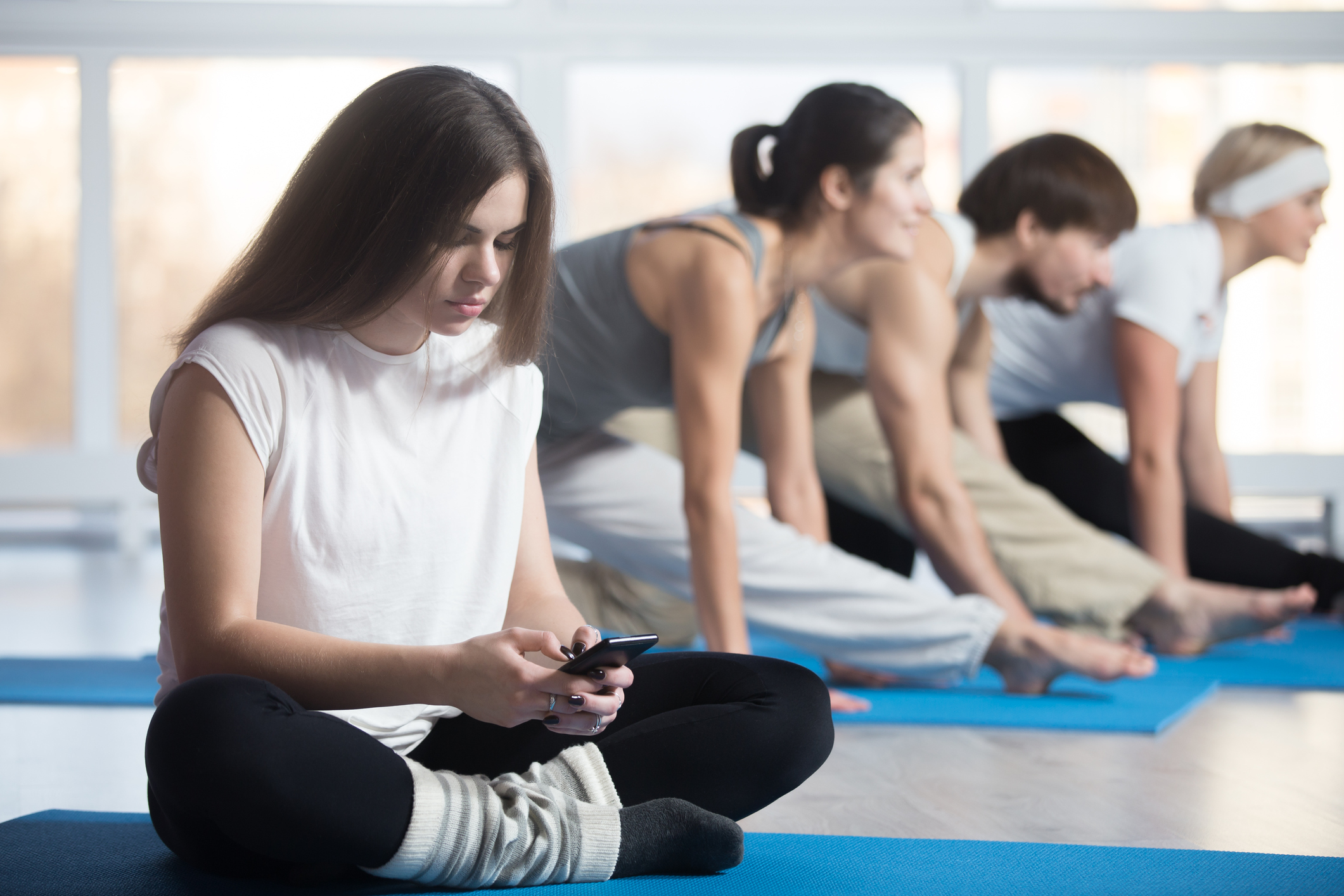
O social media addiction It can influence sleep quality, anxiety and depression. And, in addition, it can generate distortion of self-image, harm in social interactions, cyberbullying and damage to self-esteem.
Some points may be related to the difficulty of letting go of the screens, for example:
- Escape from reality: the person avoids contact with themselves and their present life.
- Numbness: the unconscious search for pleasure on social media can be a way for people to avoid feeling uncomfortable.
- Chemical addiction: excessive use releases dopamine in our body and, as a result, generates dependence, that is, it generates addiction to social networks.
- Procrastination: the search for immediate pleasure on social media makes us procrastinate and leave what is important for later.
The Damages of Social Media Addiction
Take a moment to reflect:
- When you leave the networks, especially when you are alone, what do you feel?
- When you connect with yourself, what sensations arise?
- Can you connect with your reality?
Often, diving into the virtual occurs for a unconscious search not to feel. A deeper and more connected contact with you can bring discomfort and perceptions of unpleasant emotions and present situations, but this is important.
Poorly prepared questions and a lack of habit in dealing with oneself, as well as the desire not to feel certain emotions, can point to a path of numbness through social media.
When we are on screen, we often forget that we even have a body, losing contact with our own presence in the real world. Thus, the surrounding environment becomes blurred and erased.
We disconnect from what is happening here to be there, inside the virtual world. In this way, excess can become an escape from reality, a way of disconnecting from contact with the present life, possibly distressing, and not wanting to deal with it.
Roots of Addiction: Understanding Screen Addiction
I am not seeking to condemn the virtual environment as something that necessarily makes people sick, but I do want to raise reflections on excessive and addictive use.
We live in a society that is increasingly accustomed to suppressing discomfort as much as possible. In other words, everything that causes discomfort, we try to anesthetize it.
There is a search for an immediate solution to the pain, even if this involves not dealing with the cause of the pain, but rather numbing the symptoms. In the same way, we deal with our issues and emotional pain.
The idea of not touching to not feel is wrong. To heal a wound, you need to touch it and bandage it. When we anesthetize ourselves so as not to suffer, we just postpone it. This is because suffering and pain are still present, guiding life unconsciously.
Another form of online addiction and one largely responsible for procrastination is the search for immediate pleasure. Just as we don't want to deal with discomfort, we want to feel as much pleasure as possible.
Therefore, giving up pleasure to deal with the present life, which requires commitments, tasks and routines that are often boring, can make you not want to leave your screens.
Dopamine: the chemistry of social media addiction
Studies have shown that the use of social networks stimulates the release of dopamine, a neurotransmitter essential for the proper functioning of the brain and motivation that acts in the reward center.
However, excessive use of what triggers dopamine generates hyperstimulation in its production.
When this happens, what used to generate pleasure becomes less stimulating and we need more stimulation to feel the same level of pleasure, leading to addiction and also to a certain numbness.
How to have a healthier relationship with social media
Now that you understand the problem, it's time to rethink and redefine your relationship with digital platforms.
Therefore, from here on, we will explore strategies to establish a healthier connection with social networks, seeking balance between the virtual world and real life, prioritizing well-being and conscious presence.
1
Map out what’s behind the addiction.
In addition to chemical addiction, what is the driver behind the excessive use of networks? What reward system is activated in your body?
What are social networks filling in your life? Deeper than you can be running away from contact so as not to feel?
2
Deeply analyze your routine, choices and lifestyle
Would it be possible to change something to make the day more pleasant or less painful? Or, what could you include that would bring you more well-being?
If there is a leak or seeking immediate pleasure onlinewhat exactly are you running from? Is there anything that can improve this reality?
3
Draw up strategies that act on the points mapped by you
If you recognize what this behavior seeks to fulfill, you can recognize something that provides you with the same issue.
For example, if the point is the search for immediate pleasure: how about proposing that, instead of procrastinating on social media, you commit to finishing everything you have to do as quickly as possible so that you have time for an activity that really matters? pleasurable?
To do this, it is also worth asking yourself: What gives you pleasure? How do you bring pleasure into your daily life? How much space in your day do you dedicate to yourself and your self-care and well-being? Even with a busy routine, how would it be possible to reserve some time for yourself?
4
What is your context?
Each person has a unique and specific reality. Therefore, it is necessary to look in depth at each case to understand the context as a whole.
The path to self-knowledge and self care It is essential to find understandings, workarounds and viable solutions to feel good without having to immerse ourselves excessively in the virtual reality that takes us out of presence.
5
Get therapy
A Psychotherapy It is essential support and guidance to understand the basis of behavior and find ways to solve and work on the addiction and its basis.
The psychologist, along with active listening and verbal and experiential work, will bring tools to deal with these issues with clarity, acceptance and safety.
6
Include offline activities in your routine and cultivate relationships outside of networks
Establish moments of disconnection and limits on time spent using social networks. This is an important strategy for balancing excesses, strengthening bonds outside of the digital world and increasing the ability to be present, connected with yourself and your surroundings.
Being able to slow down, find pleasure in other activities and create that healthy balance between the virtual and the real is fundamental to maintaining health and dealing with addiction.
Luisa Restelli
Psychologist, Body Psychotherapist and Systemic Family Constellator. Provides individual and couples consultations in RJ and online and teaches therapeutic groups and lectures.




